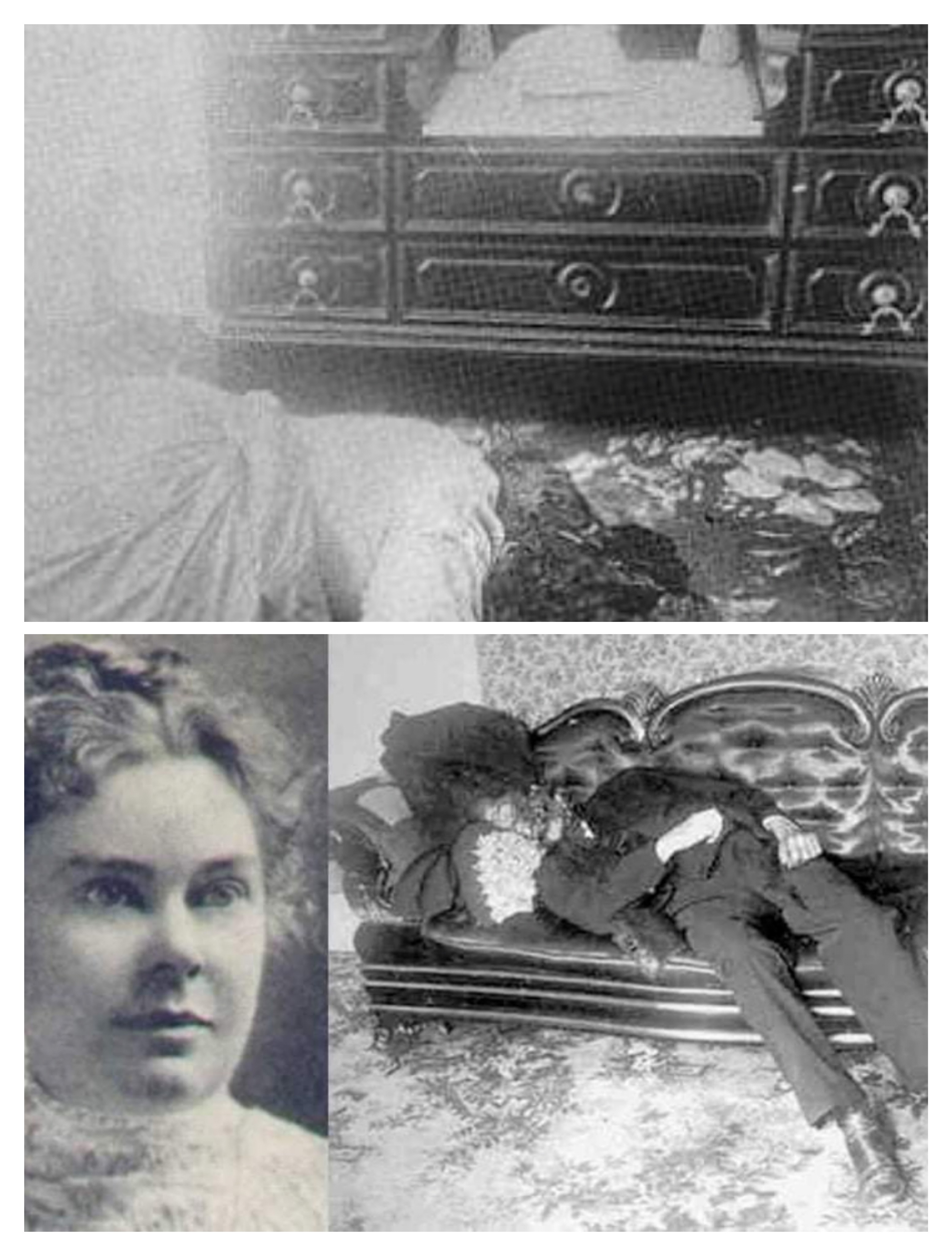The Lizzie Borden Killings

Lizzie Andrew Borden was born on July 19, 1860, in Fall River, Massachusetts to Sarah Anthony and Andrew Jackson Borden. She was the main suspect in the axe murders of her father and stepmother on August 4, 1892. It became the Nineteenth Century "Crime of the Century."
The Bordens had been very rich. At the time of his murder, Andrew Borden was worth over $300,000 ($8.17 million today). Lizzie believed her stepmother was a golddigger. Tensions were high in the Borden home before the murders.
After Andrew deeded a home to his wife's sister, his daughters Lizzie and Emma thought they deserved one, too. Their father Andrew sold them the home they grew up in with their deceased mother for $1. The girls sold it back to their father for $5000 a few weeks before the killings.
The whole family had fallen violently I'll a few days before the murders. Andrew was not very popular in Fall River and stepmother Abby feared they had been poisoned by some mutton they had been served.
Andrew Borden had a reputation for being cheap and making enemies in business. Lizzie said she had been worried someone might hurt her father because "he is so discourteous to people."
The family's maid, Bridget Sullivan testified that on the morning of the murders, when Andrew returned from his morning walk, the door jammed and his key wouldn't unlock the house's front door. Sullivan came to open the jammed door and said she heard Lizzie laughing at the top of the stairs, but not trying to help.
That Lizzie upstairs became a key part of the evidence at her trial. It was thought that anyone who walked upstairs would have seen her stepmother's body. Wouldn't Lizzie have known her stepmother was dead, counsel asked?
A local store clerk testified Lizzie had attempted to purchase cyanide from his drug store the day before the killings. He said he refused when Lizzie couldn't produce a prescription. The judge would later rule this coincidence inconsequential and inadmissible in court!
The murder was memorialized in a popular rhyme sung by generations of children jumping rope:
Lizzie Borden took an axe
And gave her mother forty whacks.
When she saw what she had done,
She gave her father forty-one.
In actuality, it was Borden's stepmother who suffered eighteen or nineteen blows. It is believed her father was hit with eleven blows.
The rhyme had a second verse, not as well known:
Andrew Borden now is dead,
Lizzie hit him on the head.
Up in heaven, he will sing,
On the gallows, she will swing.
Lizzie initially gave contradictory and strange answers to the police officers' questions. The police also said she was too calm and poised in her answers and they disliked her attitude. Nobody bothered to check her for bloodstains.
At trial, police said they only conducted a cursory inspection of her room because they said Lizzie was not feeling well. Two hatchets were found in the home's basement and a hatchet head with a broken handle. This last was thought to be the murder weapon since the handle break appeared fresh.
Andrew and Abby's heads were removed during the autopsy and the skulls were presented in evidence during the trial, causing Lizzie to faint!
The dress Lizzie had been wearing the day of the murders was later learned to have been burned. Only she and the maid were in the home at the time and the maid seemed to have a good alibi. Lizzie's original inquest testimony was declared inadmissible. It became what has inspired so much modern debate on Lizzie's innocence or guilt.
The jury was only out an hour and a half and pronounced her not guilty! The verdict has been controversial ever since, but no charges were ever brought against another person.
The court cleared Lizzie of the charges. There wasn't enough concrete evidence against her, the defense provided witnesses that gave Borden an alibi, and they just couldn't believe that the female Sunday school teacher could ever be capable of such crimes.
Countless theories have been proposed about what might have happened. Some blamed Borden, others on Sullivan, and still others say that the girls committed the killings together. But more than 100 years later, the mystery remains unsolved.
The case became a popular cultural phenomenon in the late nineteenth century U.S.due to massive exposure in tabloid newspapers, books, and magazines.
Lizzie and Emma died only nine days apart and were buried side by side in the family plot in Oak Grove Cemetery, as neither had ever married.
Today, the murder home serves as The Lizzie Borden Bed and Breakfast. It is both a museum and a bed and breakfast. You can sleep next to crime scene photos that declare "watch your head"!

 My First News Item
My First News Item My Nine News Item
My Nine News Item